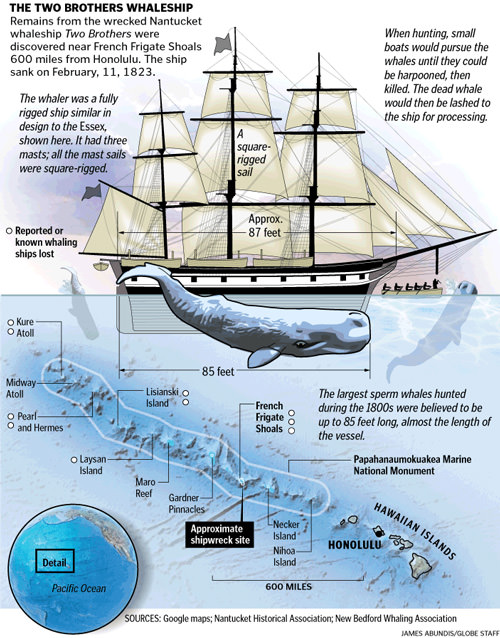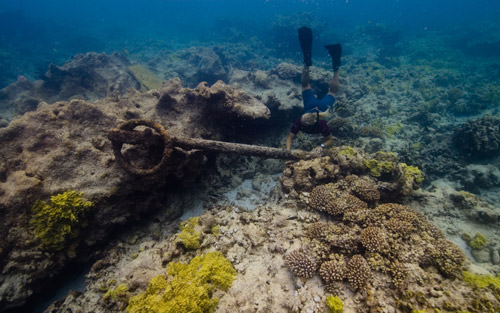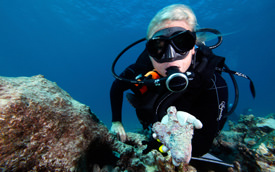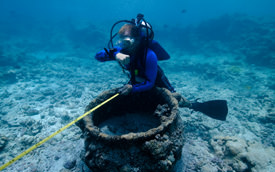Whaleship in Northwestern Hawaiian Islands makes history – again

Something breaks the surface of the Pacific Ocean with a hypnotizing sound – the exhale of a whale just before it takes a breath and dives again. A hundred years ago, this would be cause for mobilizing small boats and harpoons for the kill; today, the tool of choice to capture these gentle giants include GoPros and a bevy of other cameras.

During the 19th century, the Two Brothers whaleship plied the waters of the Northwestern Hawaiian Islands until it wrecked upon a reef in the shallow waters off French Frigate Shoals in 1823. Discovered in 2008 by a team of NOAA maritime archaeologists, it took two and a half more years to positively identify it as the resting place of the Nantucket whaleship Two Brothers, whose commander, George Pollard, also captained the doomed Essex, which was the inspiration for Herman Melville’s classic tale Moby Dick.


In November 2017, the Two Brothers was added to the National Register of Historic Places due to its significant contribution to learning about Pacific maritime history and the North American whaling industry. The story of the Two Brothers draws the connection between the remotest protected area on Earth and the small communities in New England halfway around the world. It is the first shipwreck site in Papahānaumokuākea be listed on the national register, and joins the USS Arizona and the USS Utah as the only two other listed shipwreck sites in Hawaiʻi.
Today, whale season has come to mean “whale watching” season as approximately 12,000 humpback whales migrate from their feeding grounds off Alaska to breed, calve and nurse their young each year in Hawaii’s warm waters between December and April.
For more information, visit:
http://www.noaa.gov/stories/shipwreck-in-northwestern-hawaiian-islands-makes-history-again
https://oceanservice.noaa.gov/news/dec17/twobrothers.html
www.papahanaumokuakea.gov/maritime/twobrothers.html



